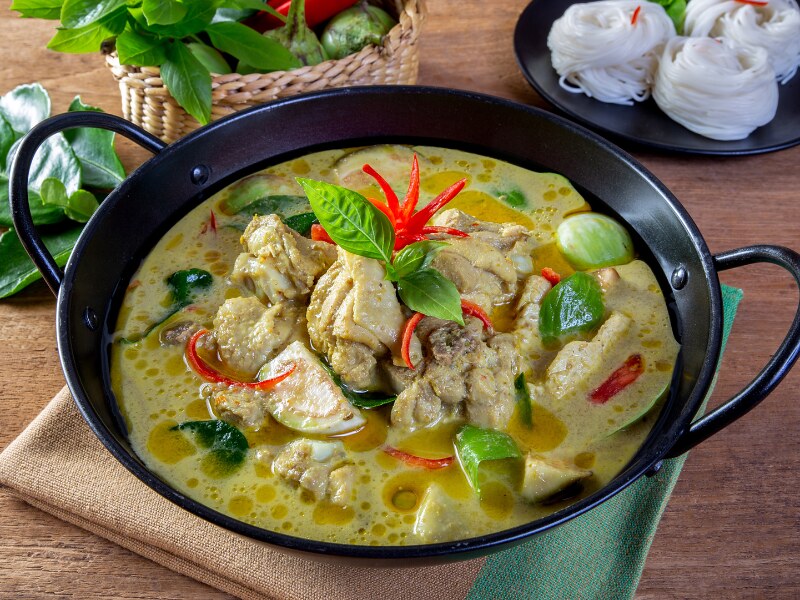
Mclub World – Thai cuisine has always been full of flavor. Aromatic herbs, bold spices, and balanced tastes. A harmony of sweet, sour, salty, and spicy. These traits define Thailand’s culinary identity. But recently, Thai food has reached new heights. Global chefs now admire Thai cooking philosophy. Dishes once found only in Bangkok streets. Now appear in high-end restaurants in Europe. Even Michelin stars are being awarded to Thai menus. Not only Pad Thai or Tom Yum Goong. But also regional specialties from northern villages. Food critics say Thai dishes offer complexity. Yet remain approachable for international palates.
“Read More: Top 10 Types of Fruit for Vegetarian Food, Vegan Food Recipes”
For decades, central Thai dishes dominated menus. But now, the world is tasting more diversity. Dishes like Khao Soi from Chiang Mai. Or Gaeng Hung Lay, a Burmese-influenced curry. Som Tum from Isan also gains attention globally. These dishes showcase Thailand’s cultural range. And their flavors surprise foreign tastebuds. Not all are fiery like people assume. Some are rich and earthy, others light and tangy. International chefs are learning these recipes. Often traveling to Thailand to study firsthand. They respect the techniques passed down generations. Thai cooking isn’t just spice—it’s about depth. Balance is achieved through careful layering.
More Thai chefs now lead famous restaurants abroad. Their talent gets recognized in culinary competitions. One example is Chef Ton from Le Du. His Bangkok-based restaurant earned a Michelin star. And he also trains chefs in New York and London. Others like Chef Bo Songvisava bring sustainability focus. Using local ingredients and reducing food waste. These chefs don’t just recreate classics. They elevate them while honoring tradition. International food shows now highlight Thai talent. Audiences appreciate their mix of precision and passion. Thai chefs proudly share their heritage with flair. Many of them were once street cooks. Now they’re world-renowned culinary artists.
“Read About: The Future Is Now: Tech Trends Shaping Tomorrow”
To support this rising fame, exports are growing. Thai basil, galangal, and fish sauce go global. Supermarkets in Paris now carry tamarind paste. And you can find Thai chili peppers in New York. Ingredients that were once hard to find. Now widely available to home cooks abroad. This accessibility boosts experimentation and interest. Cooking classes abroad now include Thai recipes. Culinary schools in Italy or Canada teach Thai basics. Food bloggers feature Thai flavors more often. Thai ingredients blend well with global cuisines. Like Thai tacos or fusion pasta with green curry. Innovation continues to spread Thai taste worldwide.
Thai food now wins more than just hearts. It wins global awards and international praise. Prestigious food awards include Thai restaurants regularly. The World’s 50 Best Restaurants list includes Thai spots. From Bangkok to Copenhagen, Thai dishes are stars. Even UNESCO recognized Thai culinary culture. In 2023, Thai street food got global heritage status. Events like the Thai Food Festival draw huge crowds. In Berlin, Tokyo, and Melbourne every year. Food documentaries now film Thai markets and kitchens. Sharing the culture through storytelling and flavors. Thai cuisine is not just trendy—it’s respected. A flavorful ambassador of Thailand’s identity.
This website uses cookies.